Note: click on screen shots to view them full-sized in a new window..
By all statistics I've read, the number one use of the Internet by far, dwarfing everything else, used more often by more people than all other of its other functions combined is Email.
So if Email is the Internet's numero uno, what's number two? Obviously, the World Wide Web or just the Web for short.
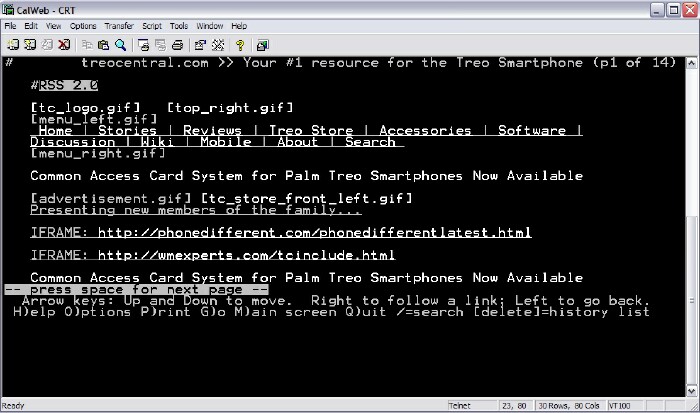
Let's hop in the time machine and go back about a dozen years. Nobody had to worry about simple things like what Web browser to use. After all, what choice was there? We all had either Lynx, a totally keyboard-driven, text-based browser you could either run locally (on your computer) or by dialing into a UNIX Shell account, or the first "real" graphical browser, NCSA Mosaic , running over our ultra-fast 1200-baud dial-up connections.
It didnt matter much which one you used, as the majority of content was very simple HTML (Hypertext Markup Language) text-only and the major quandary of the day was whether or not to utilize graphics (and what format of graphics).. on Web sites.
Take a look at what TreoCentral.com looks like in Lynx. Lynx, of course, being nothing but text, couldnt display images of any kind, (but it displayed "alt" tags and it let you download them and display them with some other program outside the browser.. and thus the need for more, or better browsers opened the door for the browser wars of the later 1990s that followed.
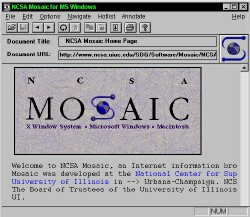
The radical evolution of the net as we know it today happened when baud rate (bandwidth) kept increasing until it reached speeds high enough to allow for graphical output to be delivered and displayed at realistic speeds. The fatter the pipe (bandwidth), the more water (data) you can push through it.
How many of you remember the excitement of waiting in line to buy one of those new-fangled 14,400k Fax modems? Or, did you go rushing out to the store to pick up a copy of Netscape Navigator in a white box? That was back around 1994, when graphics on the Web meant a site with a logo on it, or a smattering of CompuServe GIF or compressed (so they'd load faster and take up less server space) JPEG images sparsely decorating a few pages of written word.

Online stores, or "e-tailers" of which there are now hundreds of thousands, were unheard of and streaming video over the Internet? Bah! Forget it. Impossible! The closest thing to full-motion-video or "FMV" was the GIF-Anim - a few tiny, postage stamp size, and low quality QuickTime movies, generally of adult nature, distributed through various and often dubious channels.
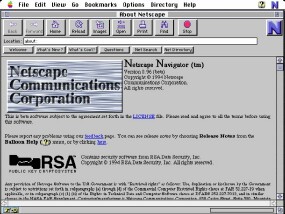
The Web, like all other things, however, had to either evolve or perish, and evolve it did. Ideas poured out of various companies and individuals, some festering concepts that took off and slowly perished, and some formed a strong foothold and managed to stay alive just long enough to grow totally out of control. These include mechanisms such as JavaScript , which allows for dynamically changing objects on a Web page (such as buttons that change color, or menus that magically drop down and reveal a list of choices just by mousing over them).. and the newly developed concept of Framing , which allows a browser to display independent Frames (side-by-side panes) of information. Navigator fully adopted BOTH ideas, but neither specification was embraced quite entirely by Microsoft, who had their own idea for how the Web should work.
Enter the Beast: Microsoft Internet Explorer
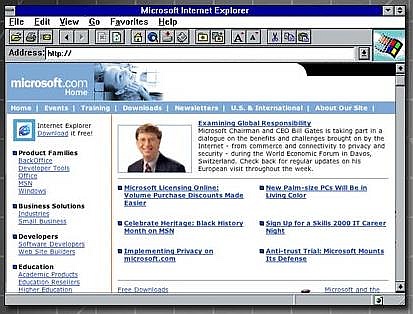
In 1995, a new Web browser barged onto the scene, proudly festooned with the Microsoft badge of honor and carrying with it the end of conformity for standards on the Internet. Microsoft, being unable to profit directly off of the success of Navigator, intended Explorer to dominate their new Windows 95 operating system platform by including it for free with every set of OS discs sold. Keep in mind that at this time, the retail tag on Navigator was roughly $50. Naturally, Explorer was still inferior in almost every way to the highly popular Netscape, but given a choice between a free browser and having to pay for one, most Americans took the free choice.
You could, of course, freely download Navigator as well, but at the time, Internet connections were still mostly pay-by-the minute, a concept which Americans have almost entirely forgotten, though Europeans are still suffering with, and downloading a multi-megabyte file even over your shiny new US Robotics 28.8k Sportster modem would still take hours, which, in dollars spent just for your online connection, meant spending the same money as buying the program in a box.
Sadly, this led to Explorer dominating Netscape, and the 90s-era browser war that forced the then familiar This Site Optimized for Navigator line seen on various sites featuring the enhanced JavaScript et al features of the evolving Internet.
The Browser Wars Episode I: Attack of the Dark Side..
By 1996, the Navigator vs. Explorer battle had raged on so heavily that both browsers supported different, often incompatible versions of the same features, and you could view some sites correctly (as their Webmasters intended), with only one of the two highly competitive programs, so most folks had both programs installed, and often running at the same time. If a Web site didn't look right in one, you'd flip to the other to view it.
JavaScript, above all else is the linchpin, as many Websites at the time had heavily employed its use, a fact of life on the net that is still a huge hurdle today on your Treo's built-in Blazer Web browser, as so many Web sites use this feature that now it's largely unsupported or poorly implemented in handheld browsers.
This is nothing new to non-mainstream platforms, as alternative machines back in the 90s had similar issues. Moreover, the non-uniformity of browsers (different ones displaying or mangling the same Web page in different ways).. spawns from non-cooperation of their developers.
Amiga's three Browsers and their ego-driven developers
The Amiga computer platform, (after Mosaic), for example had three competing Web browsers, all of them commercial programs, about $30.00 per, and each of which had its boosters and haters, and each supported features that that other two did not.
These three were IBrowse , AWeb (now an Open Source project) and Voyager, the latter of which was the most feature rich and therefore the buggiest. Irony! Amazingly, all three are still actively developed and updated.
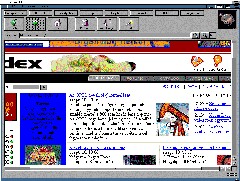
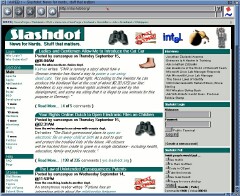
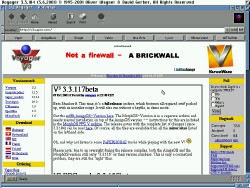
Now, if the three developers of these browsers (two German, one Danish) could have just joined forces, and combined their efforts as a team, to cooperate and develop one solid, shining killer product there would have never been a need to run three separate apps to view three different Web pages, but this was impossible, and not to be.
Why? Arrogance and greed kept the competing products segregated, and ultimately crippled them each program's developer's ego ("My browser is the best, yours sucks!").. prevented him from collaborating with, or even talking to the other two, until each of their programs was so dated by comparison to the browsers on other platforms that these days, even household name-type sites like eBay, who has tens of millions of registered users, are almost un-viewable in them. The more features eBay added, and it's just one glaring example, the worse the three Amiga browsers handled it, because the shrinking Amiga market meant fewer software sales, and so the devs had to go get "real" jobs, because they couldn't make a living off their browser sales.
Every new feature is not necessarily an improvement, which history has proven time and again, but stubborn mega-corporations simply don't listen, don't understand, don't care, or take the stance that "we know more than you do, and we're gonna change it, so love it, live with it, or leave it."
The fuel on the fire through all of this was Explorer, which Microsoft pushed so heavily that in 1998 Netscape filed an anti-trust suit against them for refusing to package Navigator with Windows 98 alongside the revamped Explorer v3, whose features only broadened the Broaca Divide of Web browser technology.
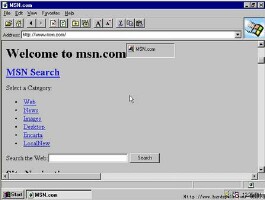
New features began creeping in, filling in the gaps between the old static Internet and the new dynamic content model. DHTML was one of these, along with the Sun Java Engine, which allows programmers to write Web-based applications that are platform agnostic. Of course Microsoft in their unlimited arrogance even found it dutiful to develop their own Java engine, furthering the issue of non-compatibility of sites on non-Explorer browsers.
Other new add-ons include Perl scripting (the classic CGI-BIN files) and PHP formats.
CSS Miami
The next big question was whether or not to adapt the new Cascading Style Sheets ("CSS") standard and if it would be wise to use all of them. To this day, no Web browser supports all of the features of the CSS Spec, though Explorer (using its common alias given by Web-gurus) exploits most of them. No PalmOS Web browser properly utilizes CSS content: If youve ever Blazered over to a site where text and graphics overlay un-naturally, or turn into one endless vertical column of single letters, or force you to break out your Dick Tracy Decoder Ring and decrypt them, you know what I mean.
A New Hope..
Thankfully, just as the Internet keeps evolving, so do the Web browsers for your PalmOS Treo. Only a few years ago it was deemed beyond hope that wed get a hand-held browser that allows us to view an entire Web page, unblemished by screen resizing. Apple's new iPhone makes a valiant attempt at that goal, presenting the Web as it's meant to be seen, but remember, the iPhone, like Palm's TX, and LifeDrive, has a rectangular screen. The Treo's is square, and aye, there's the rub..
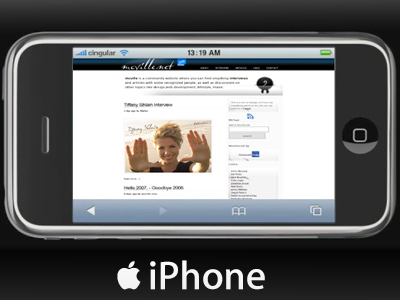
When you shrink a rectangular-format Web page down to fit a two inch square screen and try to keep it even remotely readable and resembling the "real thing", all Hell breaks loose.. happily Blazer allows us to see the content of a site by switching to its Wide mode just as if we were sitting at a "real" PC, although with a lot of side scrolling required to do it.. but it still doesnt allow us to work with JavaScript based rollovers or menus, or run JAVA apps. The necessary mechanisms in Blazer simply dont exist, or, where they do, they're still very immature compared to full-sized browsers.
This causes a heap of problems with a good number of commercial sites. Even some banking sites dont display properly (or at all) in Blazer. Although some banks are rolling out smart phone savvy versions of their online banking systems, they still haven't cooked up a version compliant with PalmOS - CitiBank is one of these, as their JavaScript menus dont work at all, though the Wells Fargo Website is, at the time of this writing, still working like a champ.
Next Page: So besides Blazer, what else is there? >>